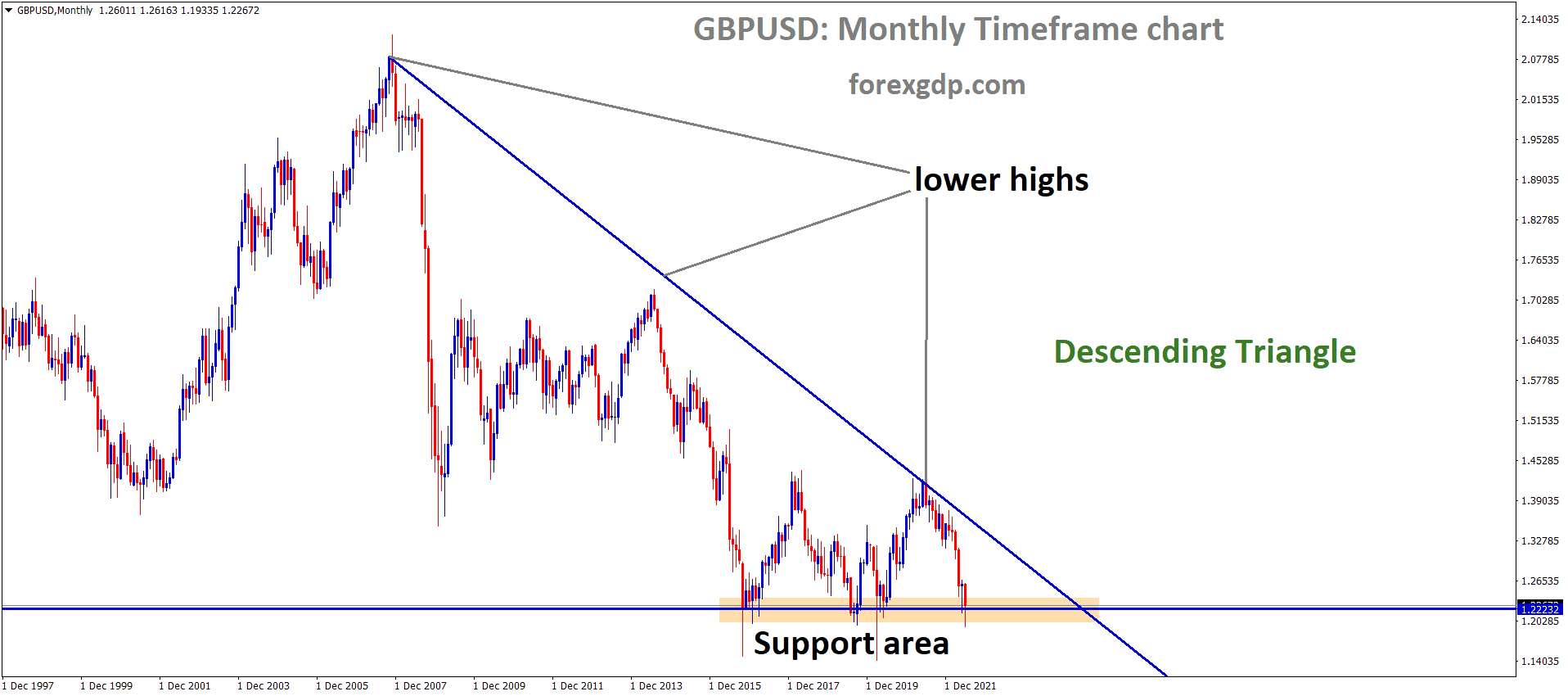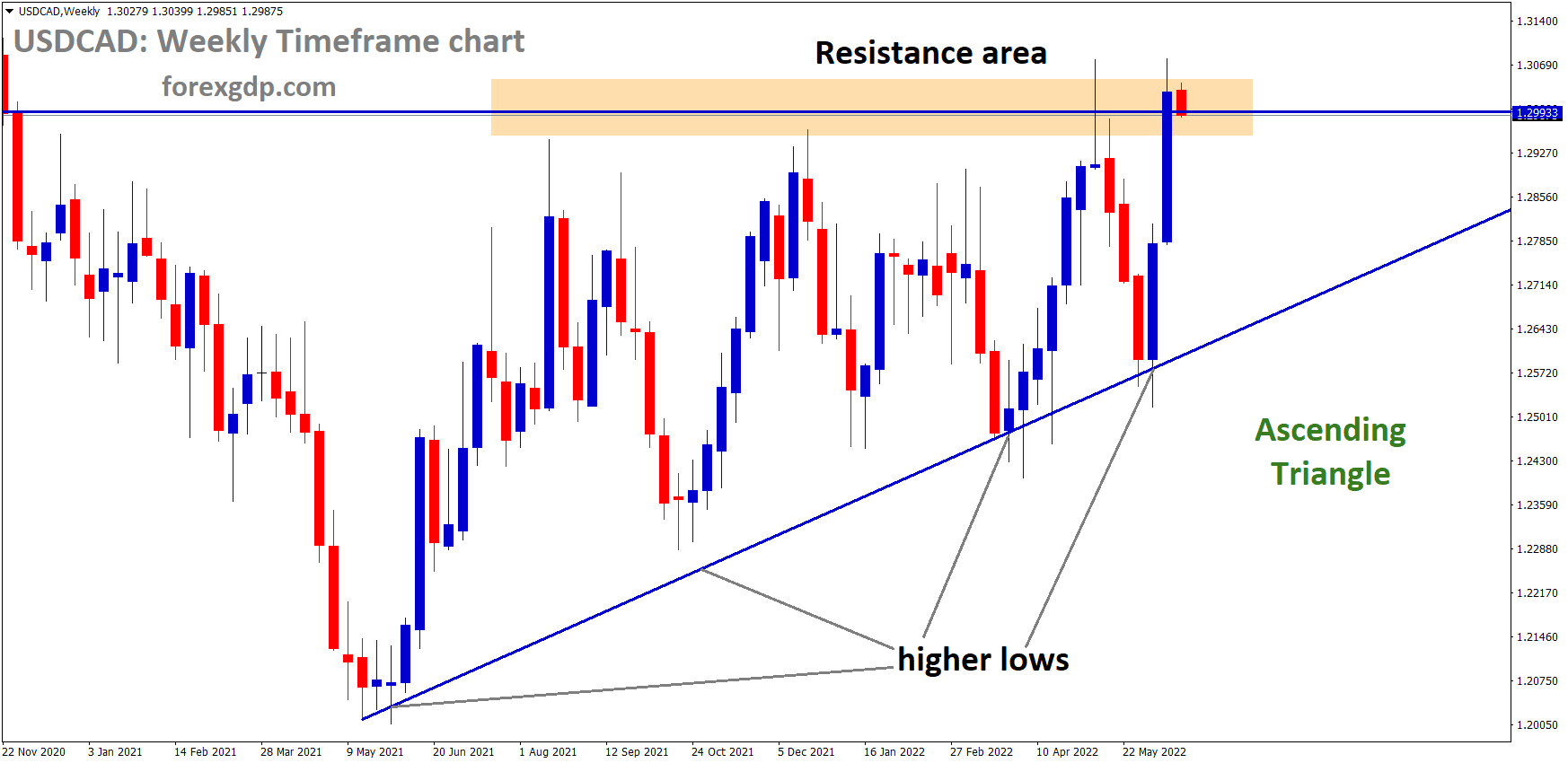EURUSD Monthly marker moving in descending channel and the market has reached the horizontal Support area of the channel.
Where is EURUSD Today
These unprecedented times have certainly caused the forex markets to see levels it has not witnessed in quite a long time. The EURUSD currency pair is no exception. Over these past couple of months, we’ve witnessed the EURUSD consistently drop in value to the point where it has now broken its 20-year low record.
EURUSD M30 Time Frame Analysis Market is moving in the Descending channel and the Market has reached the lower high area and Horizontal Resistance area of the minor Box Pattern.
This comes as no surprise considering the fact that the dollar index has been getting stronger over the last couple of weeks. The war in neighboring Ukraine and Russia has definitely fueled the fire for the market rates to drop like a fly. The EURUSD pair is currently teasing around the 1.04 region but it is expected to continue dropping till the end of the day.
ECB Schnabel Speech
EURUSD Daily market is moving in descending channel and the market has reached the lower low area of the channel.
The ECB has really changed the way they reveal information in their speeches. Previously, every ECB speech wouldn’t really reveal any information on whether or not the upcoming monetary policies will be any different from what they are now. However, it seems as though the ECB has heard the feedback of all stakeholders as all the speeches this month so far have pointed towards an increase in interest rates to above neutral levels. This was even confirmed by ECB Lagarde’s speech earlier last week where she revealed the same fact that we should expect a rate increase as early as June. Similarly, ECB’s Schnabel recently held a speech at a conference organized by the Österreichische Vereinigung für Finanzanalyse und Asset Management. She discussed globalization and domestic inflation.
Isabel Schnabel, Member of ECB’s Executive Board, revealed in her speech, “Before the pandemic, the integration of many large emerging market economies into global value chains led to an unprecedented rise in global production capacity, weighing on inflation. Today, global demand is exceeding global supply, putting persistent upward pressure on prices in countries all over the world. Second, whether or not oil shocks feed into core inflation depends on the macroeconomic environment. For these to turn from relative price shocks into price level shocks, one needs an environment of excess demand, and hence strong corporate pricing power.
EURUSD Weekly Market is moving in Box Pattern and reached the Support area of the pattern.
In this situation, which is the one we are facing today, a strong pass-through of higher input costs to export prices can alleviate the negative terms-of-trade shock. Third, changes in global capacity utilization can have important implications not only for the distribution of income across economies but also within them. Over the past year, many firms could expand their profits, often implying that consumers, rather than shareholders, have borne the brunt of the inflationary shock. Finally, the globalization of inflation does not imply that monetary policy can remain on the sidelines.”
Where is USDJPY Today
The USDJPY is another great example of a currency pair that has been greatly impacted by the current unprecedented times in the economy. Over the past couple of months, we’ve witnessed the USDJPY pair consistently increase in value to the point where it has now broken its 20-year high record. This is mainly due to the dollar index now being more stronger than ever.
USDJPY M15 Time Frame Analysis Market is moving in an Ascending channel and the Market has rebounded from the higher low area of the Ascending channel.
It can also be blamed on the supply chain shortage issue all over the globe due to Russia taking over oil pipelines in Ukraine and halting exports. The USDJPY pair is currently teasing at around the 129 region and it may remain in this region for now until we find out any major economic events.
BOJ Kuroda Speech
The Bank of Japan has been one of the very few national financial banks that are of the view that monetary policies are best left unchanged. They believe that increasing the interest rates in order to combat inflation will only end up doing more harm than good. BOJ Governor Kuroda is of the belief that increasing interest rates will end up causing a recession in the long run.
USDJPY H1 Time Frame Analysis Market is moving in the Descending channel.
He assured the citizens of Japan that although they are going to face quite a bit of struggle to maintain the same lifestyle now that everything is more expensive, he’s going to do his very best to work with the government in bringing out relief packages to those that need it the most. This is supposed to help alleviate some of the struggles being faced by the people. BOJ is hopeful that inflation will drop soon on its own.
In his speech, BOJ Governor Haruhiko Kuroda reveals, “Japan’s economy is still on its way to recovery from the significant downturn caused by COVID-19, and it has remained under downward pressure from the pandemic. The recent rise in commodity prices has negatively affected domestic demand through a decline in real income. In addition, while the inflation rate is expected to rise to around 2 percent in the short run, this will be driven by energy prices and a lack of sustainability. The Bank, therefore, does not consider that scaling back the current monetary easing is appropriate.
USDJPY H4 time Frame Analysis Market has broken the Ascending channel Pattern.
In this regard, I would like to reemphasize that the current situation of Japan’s economy is completely different from the United States and Europe, where economies have already recovered to above pre-pandemic levels and inflation rates have reached around 8 percent. In recent years, economic uncertainties have increased significantly due to non-economic factors such as frequent natural disasters, the COVID-19 pandemic, and Russia’s invasion of Ukraine. Not only is it difficult to predict how such shocks unfold, but there is also a lack of sufficient data and accumulated knowledge on the spillover effects of such shocks on the economy. Given such great uncertainties, central banks need to conduct monetary policy by extensively examining, without any preconceptions, a variety of data available at the time.”
Upcoming Important Events
There are a couple of upcoming events that we need to keep an eye out for as they may impact the market conditions. Tomorrow, the RBA will be releasing its meeting minutes which will explain in more detail the reasoning behind the latest monetary policy decision. We are also expected to hear from both ECB’s Lagarde and Feds Powell later tomorrow which will greatly impact both the EUR and USD markets.














